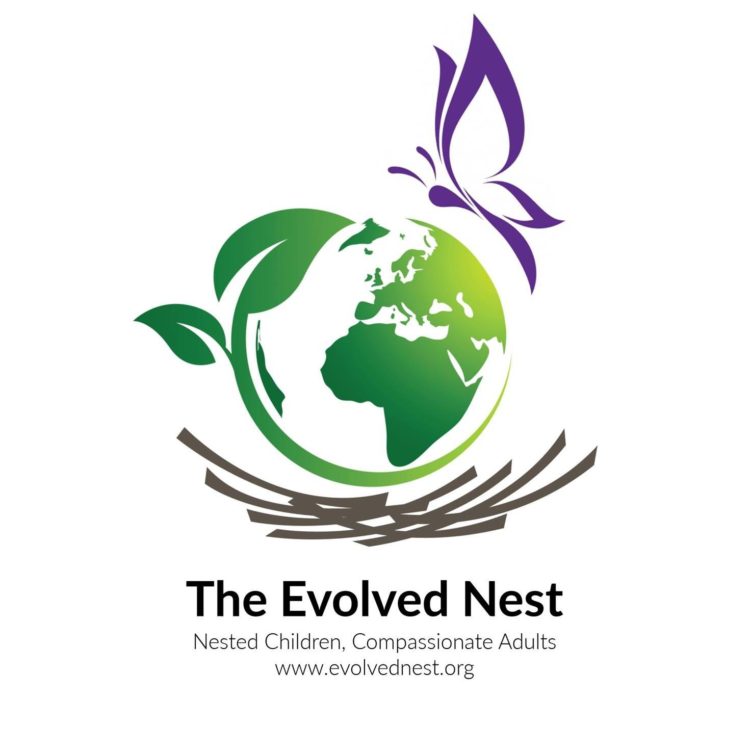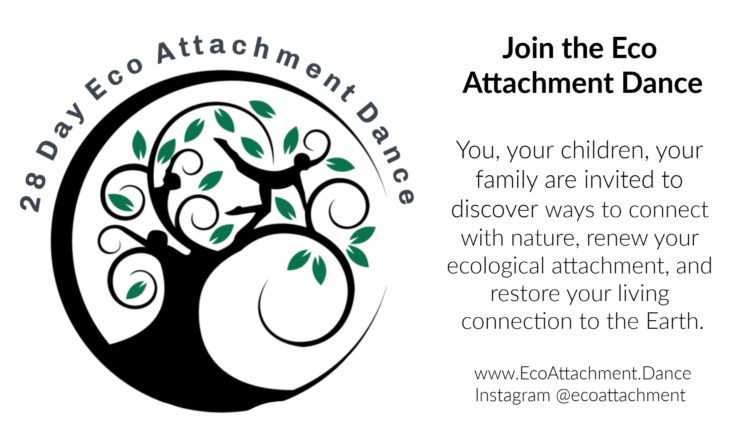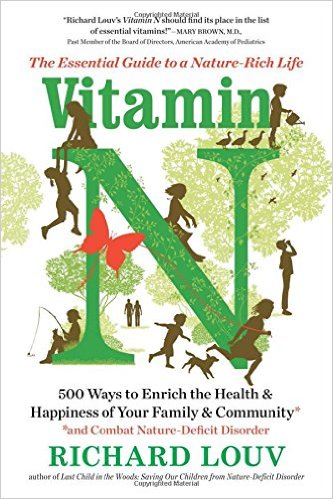Being disconnected from nature can lead to negative outcomes. Learn how to reconnect with the living world around you. Listen to award-winning neuroscience researcher, Darcia Narvaez, PhD, share foundational insights into the Evolved Nest with Mary Tarsha in the podcast below. You can also find the transcript below, as well as a link to the entire podcast collection.
Mary Tarsha is a PhD student in Developmental Psychology and Peace Studies at the Kroc Institute for International Peace Research at the University of Notre Dame. She conducts research investigating human flourishing and moral development in the Evolutionary Moral Psychology Laboratory under the directorship of Dr. Darcia Narvaez.
Subscribe to The Evolved Nest’s e-newsletter for notifications of new and free podcasts!
Visit the nonprofit initiative at www.EvolvedNest.org.
Find the entire Evolved Nest podcast collection here.
Discover the 28 Day Eco Attachment Dance, based on Darcia Narvaez’s research, here.
About the Evolved Nest
Every animal has a nest for its young that matches up with the maturational schedule of the offspring (Gottlieb, 1997). Humans too! The Evolved Nest (or Evolved Developmental Niche; EDN) refers to the nest for young children that humans inherit from their ancestors. It’s one of our adaptations, meaning that it helped our ancestors survive. Most characteristics of the evolved nest emerged with social mammals more than 30 million years ago.
Humans are distinctive in that babies are born highly immature (only 25% of adult-sized brain at full-term birth) and should be in the womb another 18 months to even resemble newborns of other species! As a result, the brain/body of a child is highly influenced by early life experience.
Multiple epigenetic effects occur in the first months and years based on the timing and type of early experience. Humanity’s evolved nest was first identified by Melvin Konner (2005) as the “hunter-gatherer childhood model” and includes breastfeeding 2-5 years, nearly constant touch, responsiveness to baby’s needs, multiple responsive adult caregivers, free play with multiple-aged playmates, positive social support for mom and baby.
Calling these components the Evolved Nest or Evolved Developmental Niche, Narvaez and colleagues add to the list soothing perinatal experience (before, during, after birth) and a positive, welcoming social climate. All these are characteristic of the type of environment in which the human genus lived for 99% of its existence. Below are publications and a powerpoint about the evolved nest.
Why does the evolved nest matter? Early years are when virtually all neurobiological systems are completing their development. They form the foundation for the rest of life, including getting along with others, sociality and morality.
Listen to the podcast
Read the transcript
MARY: Welcome to the evolved nest. We talk about child development, human flourishing, morality in society. You’re welcome to follow us and www.evolvednest.org. I am Mary Tarsha and I am here today with Dr. Darcia Narvaez. Thank you for being with us.
DR. NARVAEZ: You’re welcome.
MARY: So today we’re going to be talking about how to overcome nature deficit disorder. So what is that?
DR. NARVAEZ: Nature Deficit Disorder. Yeah sounds like a terrible disease. Well it’s a disorder that Richard Louv identified in a book called Last Child in the Woods. He noted that very few children were playing outside anymore and they had no connection to their natural landscape. He noted the kinds of deficits that they developed. They are less tuned in to the natural world’s way of being. They didn’t really much care about the natural world. They have no sense of feeling safe in the natural world. All sorts of things that are weird for our species because our species evolved to be in the natural world and to be tuned in, to connect, to be responsive and to be responsible for the well-being of the natural world. Richard Louv and others like Wendell Berry the poet activist have pointed out that you really have to develop a sense of connection to nature, nature connection, in order to be fully human and to stop the planetary devastation that’s going on now because we’re disconnected.
MARY: So having a nature disorder, a nature connection disorder means you’re almost like afraid of nature or afraid of being in nature.
DR. NARVAEZ: Yes. You can see this in parents now. There was a study that was done, I think in 2006, it looked at how far parents would allow their children to play away from the family home, and it was 1/9 the distance parents from 1970, even though the crime rate was the same and everything was pretty much the same in terms of safety. But the parents were more anxious and they were less interested in letting their children outdoors.
This notion of controlling children by keeping them indoors of course is not just a parent thing, It’s also screens that have taken over children’s time. Which reminds me that when television was first in people’s homes, some were worried about its effects. The consensus among scientists, those who were studying the effects of television in the early years anyway, was that the worst thing about television was what it was replacing. It was replacing outdoor time with their friends, playing social games and such. Instead, the child is sitting in front of a screen, which is not all that great for development.
So, what’s been happening is that parents and screens have been taking over the lives of children and controlling their ability to go out and freely play. There is a woman, Lenore Skenazy, whose son was interested and had been asking his mother for the ability or opportunity to find his way home if she dropped him off someplace in the city.
Finally, at age 10, she let him do that. She dropped him off in the middle of New York City and allowed him to figure out how to find his way home. Then she wrote a blog post about it. He was so happy. It was really great. He had a wonderful self confidence boosting kind of experience. She wrote about that in her blog and then loads of criticism landed.
They called her the world’s worst mom and scolded her–how could she do this and put her child in danger and on and on. She ended up writing a book called Free Range Kids, rguing for the importance of letting children have free range, exploring their lives, their landscapes and where they live, giving them the freedom to develop their self confidence and abilities. She ended up with a TV show to help parents get over their fears. I remember watching one episode where the mother wouldn’t let her children out of the house. They lived in a suburban neighborhood, just house after house after house. The show finally persuaded the mother to let her children have a lemonade stand in the driveway and you can see her watching anxiously from the window, biting her nails. There are some intergenerational things happening where we’ve undermined the nest, we’ve made everyone more anxious, feeling less safe in the world generally, and this is transferred into parenting.
MARY: That’s really interesting. So I’m trying to wrap my mind around the fact that nature deficit disorder is really about fear and control then, right. If you’re really afraid of the natural world and you’re disconnected it may be avoided in your own life, you avoid going out in nature in your own life and then want to protect your children, having a good orientation, trying to help them and protect them, but really it’s harmful. It’s an intrusiveness to prevent them from being out in the natural world and to be able to connect. You’re relating this to people feeling like they have to go out and control the world if you’re afraid of it, which then leads to the state of the crisis that we’re in ecologically speaking.
DR. NARVAEZ: That’s been happening for hundreds of years or millennia even, since civilization started to remove itself from being in the natural world more and more, and as cities developed people had less and less experience with the natural world, so they got more afraid of it. Civilization is about control, to control animals and plants and make them do what you want. The inability to connect–this goes back to play– to be flexibly attuned to nature was lost with so many sensibilities. Our senses are not just five senses. We have dozens of senses, like how your body feels when the wind is blowing a certain way. There are so many senses we’ve forgotten, in a way because we spend most of our lives indoors and away from the natural world. We have undernourished our sense of being in the natural world in a flexibly attuned way. So it seems logical to protect kids from what you think is so dangerous.
MARY: That’s interesting. I really like how you write in other places that attachment parenting, attachment theory has had many decades of investigation and research now, but what really is missing in there is also that connection to nature. So it’s important to have secure attachment with other people and with caregivers, which we talked about in other podcasts, but it’s also important to connect to nature as well.
DR. NARVAEZ: That’s right. Nature disconnection is something that Wendell Berry says is really at the heart of our destructiveness of the planet. We can think logically that ‘yeah we should be nicer to nature so we can survive as a species,’ but then nothing happens and things just keep going on the way they do. Berry says ‘it all turns on affection.’ You’ve got to have affection for your local landscape, for these trees, this river, for these animals and keep them in your heart of hearts as part of your community and hold their well-being as central as your own. This is the Native American approach. The First Nations view is we’re all part of this community and why would I want to jeopardize my relations because the animals and plants and rivers and mountains are all my relations and I’m responsible to them all.

What I do in my classes now is I try to help my undergraduate get tuned into nature. One time we went outside and stood in a circle because we didn’t have much time and it was cold, and I asked them to just close their eyes, breathe deeply (we had practiced belly breathing and relaxation to get vagal tone going well). Then I asked: what do you hear? What do you feel? They remarked later on, oh I didn’t know there were birds around here. This is on a campus with birds and trees. And oh the wind, I heard the wind. It’s like they never paid attention before. In civilization, we’ve misdirected our attention in many ways towards work, work, work, produce, produce, produce, consume, consume, consume, and we forget that we live on the earth and we are part of the earth, and the earth takes care of us and if we don’t take care of it we’re not going to be here much longer as a species. We’ve forgotten all of that connection and that really rich fruitcake of being part of the earth.
MARY: You describe it really well. I like in other places that you write too that it’s about a relationship, about connecting and being in a relationship with nature, and also learning from nature rather than dominating it and controlling it. Being able to be in wonder about a flower or a tree or something like this and really marvel and learn from the way that it’s living and functioning and things like this. We have a lot to learn from the earth.
DR. NARVAEZ: Yes. This is where the First Nations view, which you can find all over the world, is quite strikingly different from how we understand our relationship with nature. It sounds insane to us, that nature communicates, that it gives guidance on what you should do. For example, writers report that native bands will all have the same dream, like about some plant flowering or some opportunity for a food source. The community sits around and talks about their dreams in the morning to understand what they are communicating. Then they all go find the plant, because they agree, oh yeah that must be it and they go find it. Or, they will tell stories that they have been in a way able to tap into having visions of what the beaver’s life is like, and they need to know because they rely on the beavers or bears.
These are some of the capacities that we’re missing because of the way we’ve been raising children and the way our culture directs our attention in a particular direction. We’re missing the capacity to pick up on all that, what the landscape wants to tell us. Each landscape is a little different and requires different care and has different needs. This sounds so insane to us because ‘isn’t it all dead? Isn’t it all insentient? There’s only consciousness in humans, right?’ But that’s not what science is showing us now.
We’re finding out that forests are alive, that the mother trees nurture the younger trees through their roots even if they’re not the same species. There’s all sorts of cooperation in nature, and we forgot that because we got caught up in this consuming, production, working orientation to living, but that’s very weird for humanity. That’s very unusual. It’s only a small slice of humanity ever that’s been oriented this way, and this is the slice that’s destroying the planet.
MARY: An example comes to mind. Recently we had some threats of tornadoes in this part of the country and as many other places here in the United States recently. Just looking at and paying attention to how the animals sense weather change, how much we can learn from them just by paying attention, oh my gosh all of the birds are gone. What has happened? Or even if you have a pet, they’re able to sense different things, so just being tuned into the animals within your own surroundings can help you begin to become more aware that we can learn from them and they help us and we help them and this cooperation that’s taking place.
DR. NARVAEZ: Good, yes. So, I mentioned Richard Louv at the beginning with his book, Last Child in the Woods, about nature deficit disorder, and he has a more recent book called Vitamin N: The Essential Guide to a Nature-Rich Life, 500 Ways to Enrich the Health and Happiness of Your Family and Community and Combat Nature Deficit Disorder. This book has 500 ways to get out and get connected. He talks about how you can create a nature-rich home environment. Your back yard can be a nature preserve. You can create places that are full of life. You can go wild and go out into wilder places and do things that help you learn about particular animals or plants. You can learn about the weather. He has ideas for schools and communities too. He also talks about sensory dysfunction, which I mentioned, and I think we really have a lot of it. We’re underdeveloped in so many ways, ways that nature can help us to develop.
MARY: Yeah, that’s really beautiful. I was just thinking about another article that we had talked about recently and they were looking at just the effect of 20 minutes a day being in nature and how beneficial it is on so many different levels, but unfortunately they termed this the nature dosage, like your pill of nature, and you know that really aggravated me because right there you’re seeing that this framework of how we’re dominating nature rather than entering into nature as a relationship and appreciation and a sense of wonder. But even apart from that, they’re finding all these effects even just from a small amount every day.
DR. NARVAEZ: That’s right. We are part of nature and we came out of nature and we need it to flourish, so it’s not a surprise. But yes the very mechanical, mechanistic scientific world though wants to make doses and control and manipulate everything instead of being wise about it.
MARY: Wonderful. Well, thank you so much for those suggestions in helping us overcome nature deficit disorder and regain that connection to the natural world and we look forward to being with you next time.






